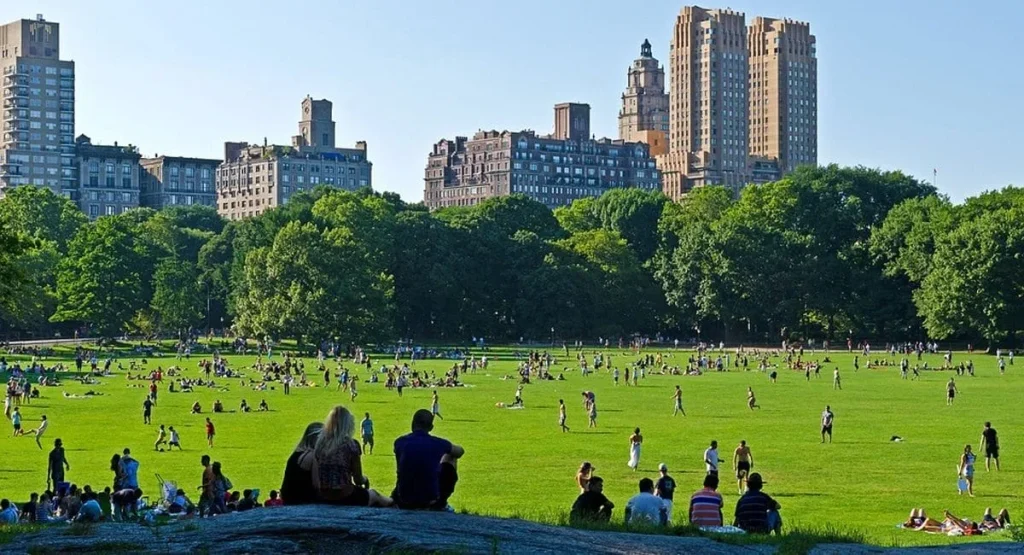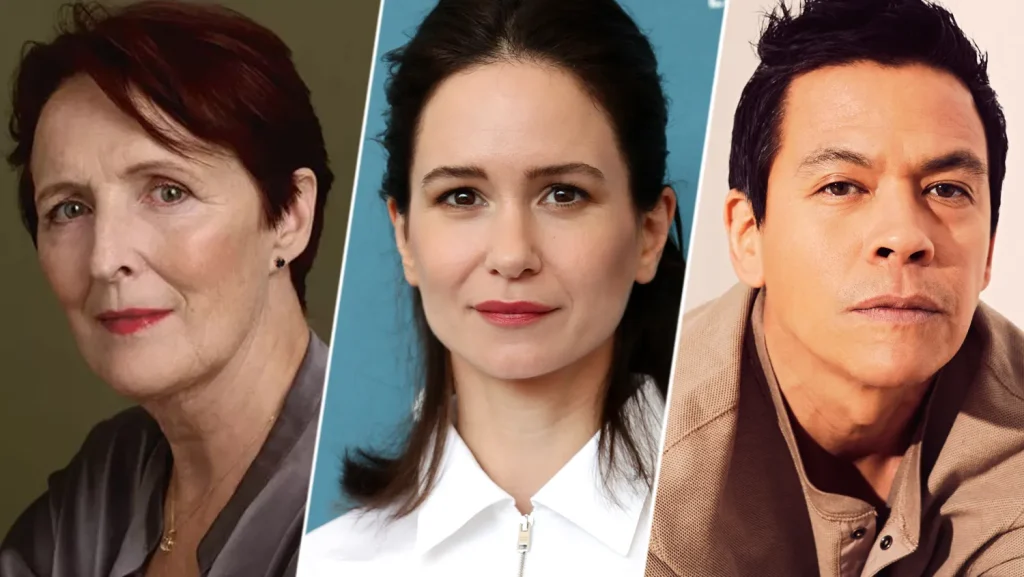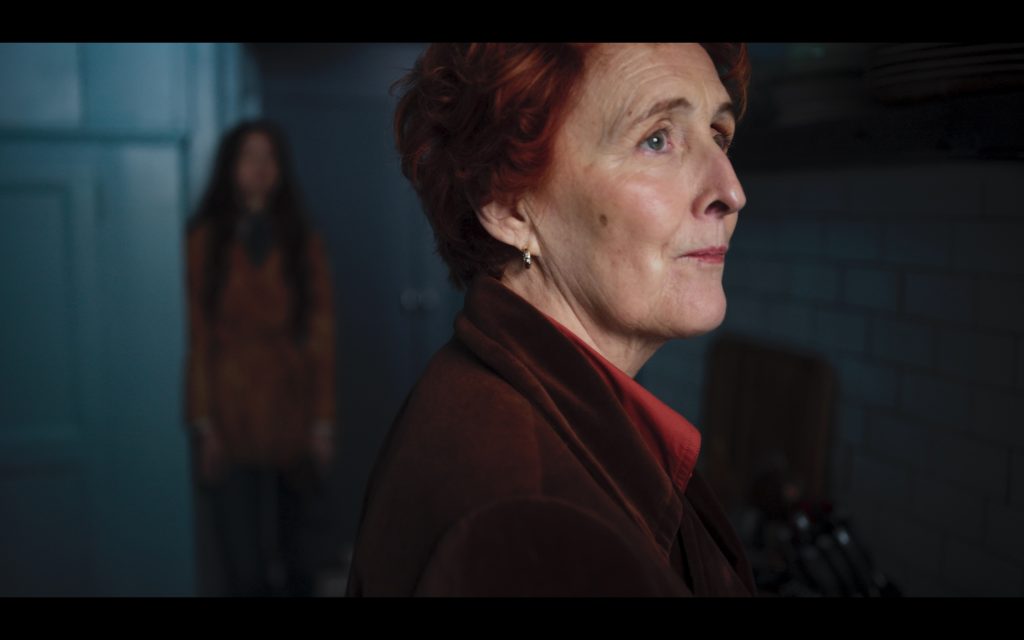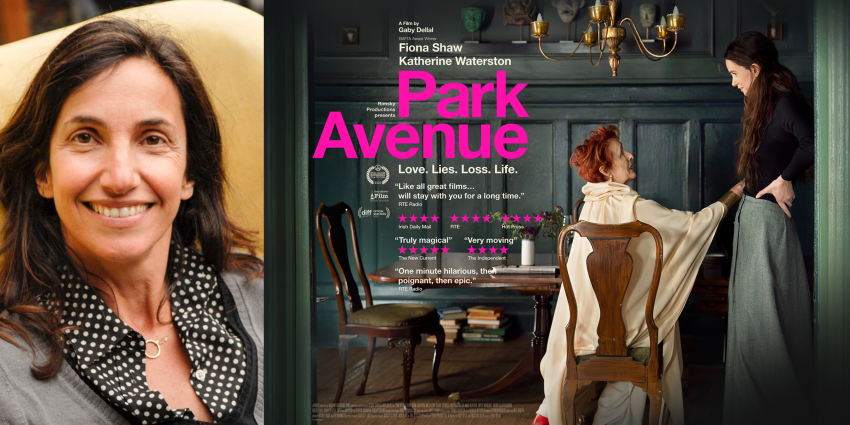We sat down with filmmaker Gabby Dellal to talk about her new film, Park Avenue a story of mothers, daughters, and the secret lives behind Manhattan’s grandest façades.
Gabby spoke with her usual wit and honesty about what drew her to the Upper East Side, how costume became character, and why Park Avenue is her cinematic love letter to New York. What followed was a conversation as vivid and elegant as the city itself.

Park Avenue centres on a mother and daughter relationship in a elegant New York setting. What drew you to this story and how did the idea come to you?
I had lived in New York before and made Three Generations there, which was set downtown. I always wanted to tell a story set uptown, which not many people do anymore. The inspiration came from a woman I met in Central Park. It’s such a special place especially for people like us who didn’t grow up there. It has an energy you never tire of.
I always dream of living there full-time, though I don’t at the moment. But having made two films in New York, I’ve been lucky enough to really get to know it. Park Avenue is, in many ways, my love letter to the city as I see it.
It’s different from someone like Woody Allen making a film about his hometown. When you’re not from there, you see it through a different lens. To me, the Upper East Side feels like the Paris of America elegant, composed, and full of quiet stories.
I was fascinated by the culture of the buildings the doormen, the rituals, the hidden lives behind those facades. In England, we don’t have that. I discovered that doormen often know everyone’s secrets and sometimes even have affairs within the building! That world felt ripe for storytelling. At its heart, Park Avenue was always a mother-daughter story.

The film features two very strong actresses, Fiona Shaw and Katherine Waterson. What was your process casting them and was there a specific line/note to help them with their characters?
In the script, I described exactly what Kit was wearing, and that immediately hooked Fiona Shaw. Usually, actors work from the inside out, but here they could work from the outside in understanding who this woman was through what she wore. A gold suit, a yellow leather cape these clothes were her armour. When she finally takes it all off, literally and emotionally, that’s when her truth is revealed.
For Charlotte, played by Katherine Waterston, it was about rebellion. She fled her Park Avenue roots to become a cowgirl, yet she couldn’t completely shake the elegance she was born into. When she returns home after 15 years out West, she slowly starts borrowing her mother’s clothes a daughter’s prerogative! Watching her rediscover her own style, her own identity, was wonderful.
The costumes were a vital part of how both actresses built their characters—they weren’t just clothes, they were clues.

As a director who also writes, how do you balance the writing process with what you discover when you are on set and working with actors?
Some people write novels or plays they write to write. I write to film. The screenplay is just the beginning of the storytelling process. I’m open to actors interpreting dialogue; I’m not precious about it. Because it’s my own work, I understand the intention behind every line, so if something evolves on set, I can adapt.
The final story really comes together in the edit. Directing your own writing is wonderful because you get to complete the circle you see the film through to its final heartbeat.
The film has personal elements (mother/daughter, homecoming, hidden truths). Did you bring anything from your own life or observations into it?
I don’t think you can make a film that doesn’t reference your own life in some way. It’s often through analogy. I once made a film about a mother with a trans son something I hadn’t personally experienced, but I understood the feeling of having a child whose life path diverged from your expectations.
In Park Avenue, I grew up surrounded by secrets. That atmosphere of what’s hidden beneath polished appearances became the emotional engine of the story. It’s not autobiographical, but it’s personal.

Can you share a scene that challenged you (either logistically or emotionally) and how you overcame it?
Well, the lovely tap-dancing scene was my version of their lovemaking. Kit never actually has sex or even thinks of Anders in that way. He’s more like her son, really, but by the end, he becomes her companion her gentleman caller. She’s very vain.
She does love him though, and the older you get and the more alone you become the more you relish someone knocking on your door.
In a New York building, I imagine there are many women who truly adore their doorman. When they no longer have a husband to buy presents for, they’ll spend hours thinking about what to get the doorman for Christmas. He’s the one who helps them with the computer, the television, all those little things.
When Kit becomes her most vulnerable and reveals that terrible backstory when she tells her daughter the most horrifying truth, she relives the moment of losing her husband. Afterwards, she can’t face going back upstairs. She’s been too exposed, too raw.
She doesn’t know how to hug her daughter, as we see earlier in the film, so instead she escapes downstairs to her friend. He’s there, steady and kind. The idea is that she simply won’t go back upstairs. He would have asked her several times “Kit, can I take you back upstairs? Would you like my arm?” He might even have put her to bed if she’d let him. But she just sits there, refusing to move.
We built this sequence around the sounds of the building the creaks, the rhythm of keys, the echo of footsteps until it took on its own musicality. Then, in her slightly naughty way, she flirts. She does one little dance, and in that instant, you see their connection.
On the page, not everyone understood it, but I always knew what I wanted. It was hard to pull off I was nervous about how much rhythm we could create with just the keys and her feet. I worried that Chaske might struggle, but he completely rose to the occasion. He did that little dance, she did all the tapping, and together it became one of the most beautiful, intimate moments in the film. Honestly, I think it’s one of the best scenes we have.

If you had to pick one moment from Park Avenue that you’re most proud of (but which you think might go unnoticed), which would it be?
When Fiona’s character takes off her clothes and just sits there. It’s such a moving, vulnerable moment. There’s beauty in seeing a woman of a certain age in that light unfiltered, unguarded. Fiona approached it with such courage and lack of vanity. It’s cinematic in the truest sense simple, raw, and human.
The industry has changed a lot in terms of how women directors are perceived and supported. You told an interviewer in 2001 that there’s “this misapprehension that it’s a male’s job.” What progress have you seen, and what still needs to change?
In 2001, there really weren’t many women directors, and now there seem to be so many more.
There’s been huge progress in that respect. There are a lot of female directors working now, which is wonderful. I think women work really well together, but I also think we’re still finding that the top jobs can be precarious. Often, a woman will get to a position of power, and instead of hiring more women, she’ll bring in a man beneath her when in fact, she’d be even stronger with an all-female team around her.
I genuinely believe that teams of women work beautifully together, but we’re not quite there yet. There’s still that old fear that another woman might steal your job. It’s so hard to become a director in the first place that, by the time you do, you often end up with a male AD. That dynamic still lingers.
That said, I do think there’s been real progress. Men are far more respectful of women in these roles now. The industry’s shifted, and it’s visible on set.
As for diversity and hiring, sometimes the obsession with ticking boxes can feel a bit forced. It’s not really about women anymore it might be about gender identity or other quotas.
There’s a lot of “wokeness” we’re all navigating, but I think that’s part of the process. It’s the awkward first step toward normalising inclusion. People are starting to understand it better, and we’re all just getting on with it.
When you’re not on set, what’s your favourite way to unwind and recharge creatively?
I design kitchens and cook a lot! Both are incredibly creative to me. I’m obsessed with production design, so it makes sense. Cooking and designing spaces give me the same joy I get from making films they’re all about storytelling through aesthetics and emotion.
In Park Avenue, Gabby Dellal captures not just a city but a feeling the elegance, eccentricity, and emotional rhythm of New York life. Through her lens, the Upper East Side becomes both setting and character, a place where secrets shimmer just beneath the surface. Like the best love letters, this one is tender, stylish, and deeply personal.
PARK AVENUE is in UK & Irish cinemas 14th November https://parkavenuemovie.com/


